Narrative Conventions ( Mrs Leconite)
Narrative conventions are:
- Genre
- Character
- Form
- Time
Vladimir Propp is a Russian critic. By breaking down a large number of Russian folk tales into their smallest narrative units. By analysing types of characters and kinds of action, Propp was able to arrive at the conclusion that there were thirty-one generic narratives in the Russian folk tale.
Characters that perform a function
- The hero that seeks something
- The villain who opposes or actively blocks the hero's quest
- The donor who provides an object with magical properties
- The dispatcher who sends the hero on the quest with a message
- The false hero who disrupts the hero's success by making false claims
- The helper who aids the hero
- The princess act's as the reward for the hero and the object of the villains plot
- The father who rewards the hero for his success
- A member of a family leaves home (the hero is introduced);
- An interdiction is addressed to the hero ('don't go there', 'go to this place');
- The interdiction is violated (villain enters the tale);
- The villain makes an attempt at reconnaissance (either villain tries to find the children/jewels etc; or intended victim questions the villain);
- The villain gains information about the victim;
- The villain attempts to deceive the victim to take possession of victim or victim's belongings (trickery; villain disguised, tries to win confidence of victim);
- Victim taken in by deception, unwittingly helping the enemy;
- Villain causes harm/injury to family member (by abduction, theft of magical agent, spoiling crops, plunders in other forms, causes a disappearance, expels someone, casts spell on someone, substitutes child etc, commits murder, imprisons/detains someone, threatens forced marriage, provides nightly torments); Alternatively, a member of family lacks something or desires something (magical potion etc);
- Misfortune or lack is made known, (hero is dispatched, hears call for help etc/ alternative is that victimised hero is sent away, freed from imprisonment);
- Seeker agrees to, or decides upon counter-action;
- Hero leaves home;
- Hero is tested, interrogated, attacked etc, preparing the way for his/her receiving magical agent or helper (donor);
- Hero reacts to actions of future donor (withstands/fails the test, frees captive, reconciles disputants, performs service, uses adversary's powers against them);
- Hero acquires use of a magical agent (directly transferred, located, purchased, prepared, spontaneously appears, eaten/drunk, help offered by other characters);
- Hero is transferred, delivered or led to whereabouts of an object of the search;
- Hero and villain join in direct combat;
- Hero is branded (wounded/marked, receives ring or scarf);
- Villain is defeated (killed in combat, defeated in contest, killed while asleep, banished);
- Initial misfortune or lack is resolved (object of search distributed, spell broken, slain person revived, captive freed);
- Hero returns;
- Hero is pursued (pursuer tries to kill, eat, undermine the hero);
- Hero is rescued from pursuit (obstacles delay pursuer, hero hides or is hidden, hero transforms unrecognisably, hero saved from attempt on his/her life);
- Hero unrecognised, arrives home or in another country;
- False hero presents unfounded claims;
- Difficult task proposed to the hero (trial by ordeal, riddles, test of strength/endurance, other tasks);
- Task is resolved;
- Hero is recognised (by mark, brand, or thing given to him/her);
- False hero or villain is exposed;
- Hero is given a new appearance (is made whole, handsome, new garments etc);
- Villain is punished;
- Hero marries and ascends the throne (is rewarded/promoted).
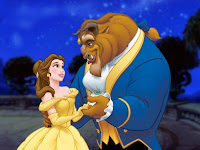
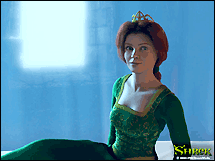 I relate Propps theory to shrek and beauty and the beast because in beauty and the prince "Bella" is the Reward given to the hero. As for shrek "Fiona" is a reward and also the princess.
I relate Propps theory to shrek and beauty and the beast because in beauty and the prince "Bella" is the Reward given to the hero. As for shrek "Fiona" is a reward and also the princess.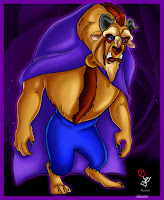
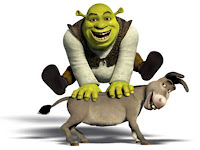 The beast and shrek are both the hero's and their helper would be the donkey for shrek and the items which are actually the servants of the house for the beast.
The beast and shrek are both the hero's and their helper would be the donkey for shrek and the items which are actually the servants of the house for the beast. 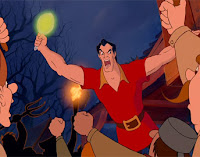
 The villain who is also the false hero is "king Farquaad" in shrek and in the beauty and the beast it would be "Gaston".
The villain who is also the false hero is "king Farquaad" in shrek and in the beauty and the beast it would be "Gaston". Todorov proposed a basic structure for all narratives. He stated that films and programmes begin with an equilibrium, a calm period. Then agents of disruption cause disequilibrium, a period of unsettlement and disquiet. This is then followed by a renewed state of peace and harmony for the protagonists and a new equilibrium brings the chaos to an end.
I can relate Trodov's theory to harry potter series because the harry potter movies start of with everything as they should be and something happened they get a problem about Voldermort and then things get confusing and that's where the action starts.
Barthes theory
"a galaxy of signifies, not a structure of signified; it has no beginning; it is reversible; we gain access to it by several entrances, none of which can be authoritatively declared to be the main one; the codes it mobilizes extend as far as the eye can read, they are indeterminable...the systems of meaning can take over this absolutely plural text, but their number is never closed, based as it is on the infinity of language
He is basically saying that a text is like a tangled ball of threads which needs unravelling so we can separate out the colours. Once we start to unravel a text, we encounter an absolute plurality of potential meanings. We can start by looking at a narrative in one way, from one viewpoint, bringing to bear one set of previous experience, and create one meaning for that text. You can continue by unravelling the narrative from a different angle, by pulling a different thread if you like, and create an entirely different meaning. And so on. An infinite number of times. If you wanted to.
All you need to know, again, very basically, is that texts may be ´open´ (IE unravelled in a lot of different ways) or ´closed´ (there is only one obvious thread to pull on).
Barthes also decided that the threads that you pull on to try and unravel meaning are called narrative codes and that they could be categorised in the following five ways:
· Symbols & Signs
· Points of Cultural Reference
· Simple description/reproduction
Aristol's Theory
Reality is difficult to understand, and we struggle to construct meaning out of our everyday experience. Media texts are better organised; we need to be able to engage with them without too much effort. We have expectations of form, a foreknowledge of how that text will be constructed. Media texts can also be fictional constructs, with elements of prediction and fulfilment which are not present in reality. Basic elements of a narrative, according to Aristotle:
"...the most important is the plot, the ordering of the incidents; for tragedy is a representation, not of men, but of action and life, of happiness and unhappiness - and happiness and unhappiness are bound up with action. ...it is their characters indeed, that make men what they are, but it is by reason of their actions that they are happy or the reverse." (Poetics - Aristotle(Penguin Edition) p39-40 4th century BC )
Successful stories require actions which change the lives of the characters in the story. They also contain some sort of resolution, where that change is registered, and which creates a new equilibrium for the characters involved. Remember that narratives are not just those we encounter in fiction. Even news stories, advertisements and documentaries also have a constructed narrative which must be interpreted

Cansu well done for conducting additional reaearch outside of class. However you must summarise your research in your own word rather than copy and paste.
ReplyDeleteSuggest how you can apply some of these theories to your own production.